
40 MHz ham radio band
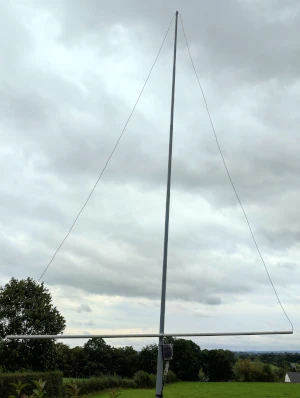
Discovering the edge between HF and VHF
After a successful petition by some fellow belgian hams and a flawless test period, the national authority BIPT has started to issue individual authorizations for transmitting in a 30 kHz sector around 40 MHz in September 2023. CEPT HAREC holders are granted permission upon individual apply and under the following regulations: maximum 5 watt ERP in A1A, F3E, J3E, J2D or J2B from 40.660 to 40.690 MHz as a secondary user. A logbook must be shared with BIPT at the end of the year and the annually issued licence can be withdrawn at any time. This reminds me of the first approaches to the 6m band in Germany at the beginning of the century :-) At that time you were also encouraged to be reachable by telephone to immediately stop your transmissions just in case; that is not required nowadays. Obviously a number of belgian hams have already claimed a permission since there has been quite some activity within the last days. Parts of the 8 m band are already allocated to ham radio use in South Africa, Slowenia and Ireland. Other countries have issued experimental licenses to hams (e.g. USA, England, Australia, New Zealand).
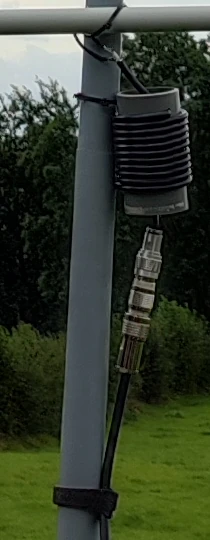
Since 40 MHz is ought to be a fascinating step at the edge of HF and VHF. In times of the still ascending solar cycle 25 the upper shortwave bands delivered a lot of fun during summer 2023. Unfortunately I have not been able to experience a lot of 6 m openings this year for several reasons. But that even encouraged me more to become qrv on 40 MHz. I am starting with a delta loop antenna, based on a design suggested by DK7ZB which comes without any impedance match.
I have assessed several designs of delta loop antennas on all upper shortwave bands within the last months, with different feed points, different porportions and several ways of matching and transforming. Based on the measurements and real life experiences, this variant without any impedance-match and a simple coaxchoke for (a)symmetry seems to work best, also with respect to injection loss.
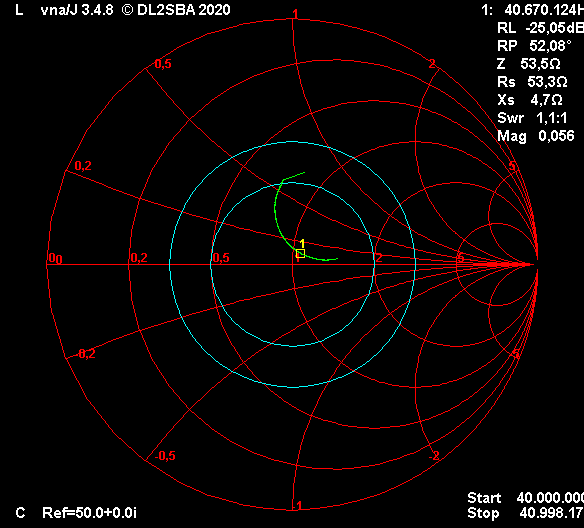 |
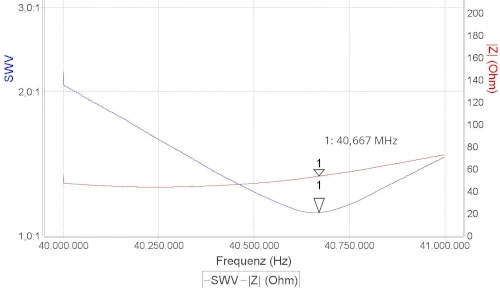 |
First QSO with LX5JX
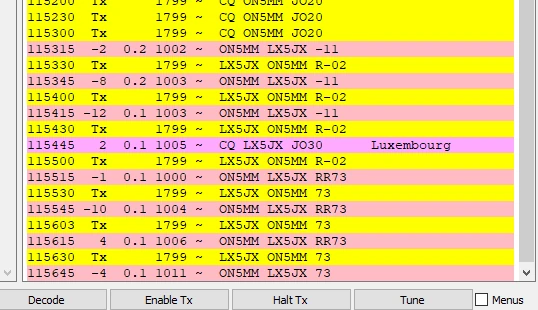
After finally having received my 8 m permission, I got qrv with my FT-817 and about 2 watts output into the delta loop. The overall QSO experience is just like 4 m and going fishing: A whole day of being on the band reveals only a few signals - if you're lucky. I received some CQ from Ireland, Belgium, Luxemburg and SV1DH in Greece. LX5JX, who is only about 70 kilometres away from me, was strongly readable several times but it took five tries and four days to complete my first 8 m-FT8-QSO with him. Seems that Es-saison and the days of outstanding conditions are already over in 2023. Fading is a serious thing on 8 m: signal strength varies a lot even during short transmissions, which might hint at reflection phenomens like scatter from aircrafts, meteors or whatever. Seems there is quite a lot to discover.
First intercontinental QSO with ZR1ADI

Last days of September 2023 did not offer any surprise, some other belgian hams were permanent guests on my screen. American stations reported some nice openings on the 8 m activity list at groups.io. October started uproarious (literally) and it took some time till I had realised that autumn's stormy greetings had pulled my delta loop near the ground with the top point only 3 meters above grass. That didn't change the SWR, so I did not notice that while sitting in shack. But, and that was a big surprise, it did not prevent my first intercontinental contact with South Africa. ZR1ADI suddenly appeared on my screen and the QSO was completed at first try. I wondered why there has been such a huge difference in signal levels. Walking in the garden afterwards and seeing what gusts had done made me think of a possible explanation.
Crossing the pond - PJ4MM
A short vacation made me miss the outstanding conditions of late October 2023. Calm geomagnetic conditions and a continuously high SFI offered nice connections to many parts of the world up to 50 MHz, including 8 m transatlantic QRP QSOs every day. After getting back to the desk, I finally managed to cross the pond for the first time - a complete FT8 QSO with Martin on Bonaire Island succeeded on November 9th.
Stats & Goals
By February 2025 I have completed QSOs with 18 different DXCCs (4X, 9A, CT, EA, EA6, EA8, EI, I, G, GM, LX, OD, ON, OZ, PJ4, S5, SV, ZS) and 38 Locator fields. After two and a half years at work, the delta loop really needed refurb, so I decided to build a new antenna and raised a 3 Element Monoband Yagi (more info to follow).
My activity can easily be traced via https://pskreporter.info.